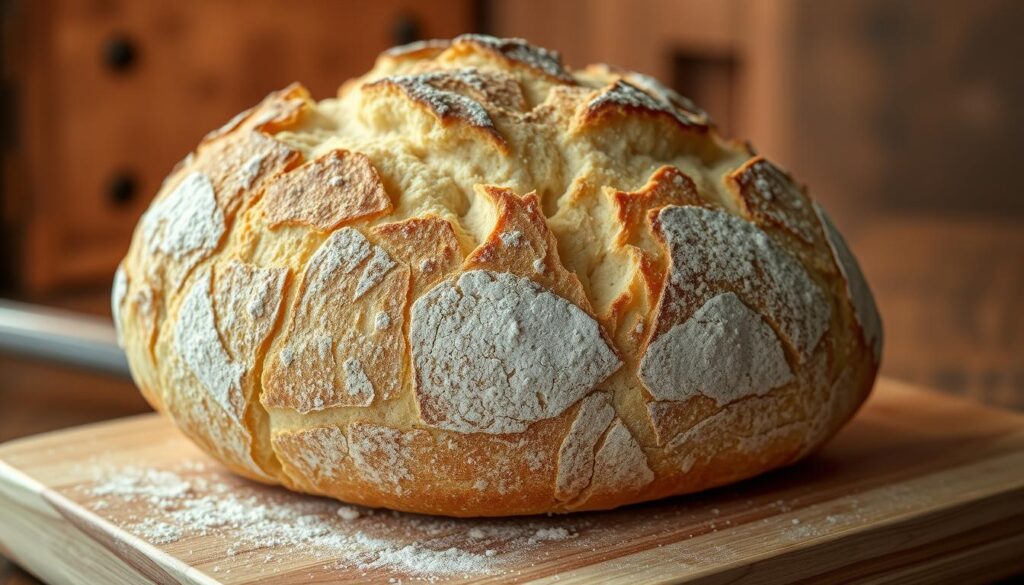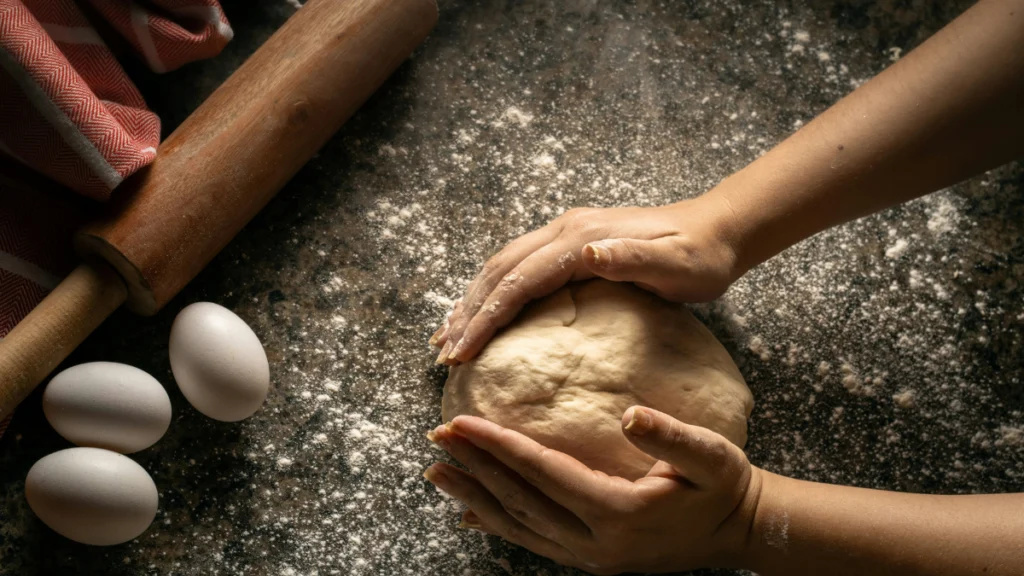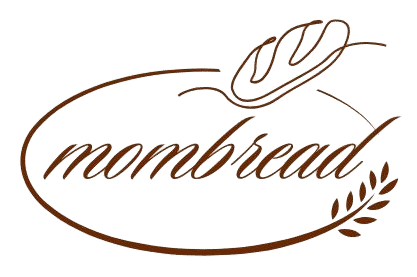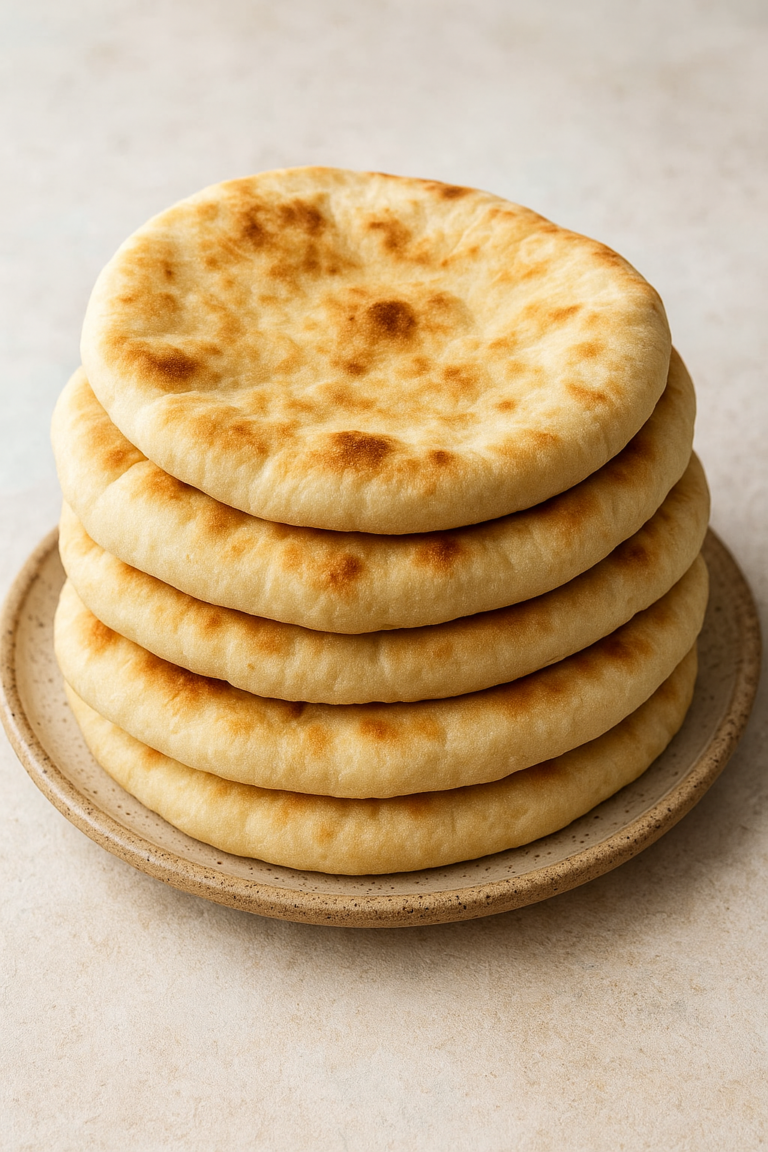German Sourdough Bread: 5 Secrets to Perfecting Your Loaf!
Imagine slicing into a warm, crusty loaf. The aroma of freshly baked german sourdough bread fills your kitchen. With a few simple steps, you can make that perfect taste at home.
Thank you for reading this post, don't forget to subscribe!Creating delicious homemade sourdough is a journey. We’re here to guide you through it. Follow our 7 easy steps to bake perfect sourdough recipe loaves that will impress everyone.
Our homemade sourdough tips will help you create a beautiful, crusty loaf. It will become a staple in your household.

Table of Contents
The Rich Heritage of German Sourdough Bread
For centuries, German bakers have perfected sourdough bread. This bread is a cornerstone of German baking culture. Its unique flavor and texture captivate bread lovers worldwide.
Traditional Significance in German Baking Culture
German sourdough bread is special in German baking traditions. It’s a symbol of community and heritage. In many German towns, bakeries have been perfecting their sourdough recipes for generations.
What Makes German Sourdough Unique
German sourdough is unique because of its meticulous preparation process and high-quality ingredients. It has a dense, chewy texture and a flavor that’s both tangy and slightly sweet. Achieving this perfect balance requires patience, skill, and a deep understanding of the bread-making process.
By embracing these traditional techniques and tips, you can create your own authentic German sourdough bread at home. Every loaf will capture the essence of this beloved bread.
Tired of complicated sourdough routines and endless waiting? Say goodbye to bread baking frustration and hello to confidence in the kitchen! In this guide, we’re sharing the best German bread recipes for beginners — no sourdough starter required. Whether you’re baking in a Dutch oven or trying your first rustic loaf, these tips will help you bake with ease and joy.
👉 Want to simplify your bread-making journey even more? Check out this handy guide on Amazon:
German Bread Recipes – No Starter, No Stress
Let’s bring warm, crusty, homemade bread back to your table — without the hassle.
Essential Ingredients for Authentic German Sourdough Bread
The journey to authentic German sourdough bread starts with the right ingredients. Crafting this traditional bread at home requires a focus on quality and the right components.
Flour Selection and Quality
The foundation of any great sourdough is the flour. For an authentic German sourdough, use high-protein flour, typically with a protein content of around 12-14%. German flour types like Type 1050 or Type 1600 are excellent choices. They have a coarser texture and higher protein content, which contribute to a better rise and more complex flavor.
Creating and Maintaining Your Sourdough Starter
Your sourdough starter is the heart of your bread. It provides the natural yeast and bacteria needed for fermentation. To make sourdough at home, create and maintain this starter. Use equal parts of flour and water to begin, and allow the mixture to ferment. Regular feeding will keep your starter healthy and active, a crucial step in following easy sourdough steps.
Additional Ingredients for Flavor and Texture
Flour and water are the basics, but salt is key for flavor and yeast control. You might add whole grains or seeds for more texture and taste. These extras can make your perfect sourdough recipe even better.
Tools and Equipment You’ll Need
German sourdough bread baking is about more than ingredients. You need the right tools too. You probably have most of the basic kitchen items already.
Basic Kitchen Essentials
You’ll need a large mixing bowl, a wooden spoon or dough spatula, and a clean work surface for kneading. A digital scale is also essential for precise ingredient measurements. This is crucial for consistent sourdough results.
Specialized Baking Equipment
While not necessary, the right specialized tools can improve your baking. A banneton or proofing basket helps create a stunning crust and shape. A Dutch oven or baking stone provides a steamy environment or a hot surface for baking.
Alternatives for Home Bakers
Not everyone has specialized baking equipment. But, you can still make great German sourdough bread with what you have. For instance, a ceramic pot with a lid can replace a Dutch oven. Or, bake on a preheated baking sheet if you don’t have a baking stone.
With these tools and knowledge, you’re ready to bake delicious homemade German sourdough bread. Enjoy your baking journey!
Step 1: Creating Your Sourdough Starter from Scratch
To make sourdough at home, start by creating your sourdough starter. This is a simple yet rewarding process. It’s the heart of your German sourdough bread, giving it its unique taste and texture.
Day-by-Day Guide to Building Your Starter
To make your sourdough starter, mix flour and water and let it ferment. Here’s a simple guide:
- Day 1: Mix 1/2 cup of warm water with 1/2 cup of flour in a clean glass or ceramic container.
- Day 2-6: Once a day, discard half of the starter and add another 1/2 cup of flour and 1/2 cup of water. This process is called “feeding” your starter.
As you feed your starter, it will become more active. It will be bubbly, have a sour smell, and grow. This means the wild yeast and bacteria are multiplying.
Signs of a Healthy, Active Starter
A healthy sourdough starter is bubbly, has a sour smell, and doubles in size after feeding. These signs mean your starter is ready to use in your bread making. With patience and care, you’ll have a thriving starter for delicious German sourdough bread at home.
Step 2: Mixing and Autolyse – Building the Foundation
Mixing and autolyse are key steps in making your homemade sourdough bread. They help your dough rise and develop its structure and flavor.
Proper Flour Hydration Techniques
Getting the right amount of water in your dough is crucial. It makes your dough easy to work with and helps it rise like bakery-style sourdough. Start with a water-to-flour ratio of 60-70%. But this can change based on the flour type and where you bake.
To mix your flour and water well, just combine them until they’re just mixed. Don’t overmix, as it can make your loaf dense. Aim for a shaggy dough that will come together during autolyse.
| Flour Type | Recommended Hydration Level | Notes |
| Bread Flour | 65-70% | Higher protein content allows for more water absorption |
| All-Purpose Flour | 60-65% | Balanced protein content suitable for most sourdough recipes |
| Whole Wheat Flour | 70-75% | Higher fiber content requires more hydration |
The Importance of Rest Time
The autolyse phase is vital for your dough. It lets the flour soak up water and start breaking down starches. This improves flavor and makes the bread’s crumb more open.
For German sourdough, rest the dough for 20-30 minutes. This time lets the flour absorb water and start enzymatic processes. After autolyse, add your sourdough starter and salt, mixing gently to spread them evenly.
By following these sourdough baking tips, you’ll make a delicious, homemade sourdough that’s as good as bakery bread.
Step 3: The Art of German Sourdough Bread Fermentation
Fermentation is key to making German sourdough bread. It needs patience and a good understanding of the process. This step turns the dough into a bread with complex flavors and textures.
Mastering the Bulk Fermentation Process
Bulk fermentation starts the sourdough’s flavor development. Keep the dough warm and away from drafts. The best temperature is between 75°F to 78°F (24°C to 25°C).
Do gentle folds to improve the dough’s structure. This step is important without over-working the dough.
For an easy sourdough steps approach, rest the dough for 20-30 minutes before the first fold. Fold every 30 minutes for 2-3 hours. This helps in yeast distribution and gluten development, enhancing flavor.
Temperature Control for Optimal Flavor Development
Temperature control is vital for flavor in your german sourdough bread. A steady temperature ensures balanced flavor. Too high a temperature can make the bread too sour.
Keep the dough at a consistent temperature during fermentation. Use a proofing box or a controlled environment. Also, watch your kitchen’s temperature to affect the dough’s temperature. This will help you make a perfect sourdough recipe with great taste.

Step 4: Shaping Techniques for Beautiful Loaves
Shaping your dough into a beautiful loaf is a skill worth learning. It not only makes the bread look good but also improves its texture and structure. The right shaping is key for a perfect crust and crumb.
Traditional German Bread Shapes and Styles
German bread is famous for its many shapes and styles. From the classic Rundstück to the long Schubladenbrot, each has its own charm. Knowing these shapes helps you make authentic German sourdough bread.
| Bread Shape | Description | Characteristics |
| Rundstück | Round bread roll | Soft crust, tender crumb |
| Schubladenbrot | Long, rectangular bread | Crusty exterior, dense crumb |
| Bauernbrot | Peasant bread, often round or oblong | Hearty, crusty, and flavorful |
Building Surface Tension for Better Oven Spring
Building surface tension is important for a good oven spring. Gently stretch and fold the dough to make a smooth, tight surface. This tension helps the bread keep its shape during baking, leading to a beautifully browned crust.
By mastering these shaping techniques, you’ll be on your way to making bakery-style sourdough at home. Remember, practice makes perfect. Don’t get discouraged if your first loaves don’t turn out right. With time and patience, you’ll get the hang of it.
Step 5: Proofing Your Dough to Perfection
Proofing is key in making sourdough at home. It affects the bread’s texture and taste. The dough rests and rises, letting yeast ferment sugars and create carbon dioxide. This creates air pockets in the dough.
Visual Cues for Properly Proofed Dough
To check if your dough is proofed right, look for these visual cues: it should have doubled in size. It should feel light and airy. Gently touch the surface; if it springs back slowly, it’s ready. If it springs back quickly, it may need more time. If it doesn’t spring back at all, it might be over-proofed.
- The dough has expanded and has a few large bubbles on the surface.
- When you gently shake the container or basket, the dough wobbles slightly.
- The edges of the dough appear slightly domed or have started to pull away from the sides of the container.
Cold Proofing Benefits and Methods
Cold proofing, or retarding the proofing process by placing the dough in the refrigerator, can enhance the flavor and texture of your sourdough. This slower fermentation process allows for a more complex flavor development. To cold proof, simply shape your dough as desired, place it in a lightly oiled bowl or proofing basket, cover it, and refrigerate for 12 to 24 hours. When you’re ready to bake, remove the dough from the fridge and let it come to room temperature before baking, following your perfect sourdough recipe.
By mastering the proofing stage, you’ll be well on your way to creating delicious, crusty loaves that showcase the best of easy sourdough steps.
Step 6: Baking Methods for Crusty, Flavorful Results
To bake a German sourdough bread that rivals bakery-style sourdough, you need to focus on the right baking methods. The baking process is crucial in achieving that perfect crust and flavor. In this section, we’ll explore the techniques for creating steam in your home oven and the guidelines for temperature and timing to ensure your bread turns out perfectly.
Creating Steam in Home Ovens
Steam is essential for developing the crust of your German sourdough bread. It helps in creating a crispy exterior while keeping the interior soft. Here are a few methods to create steam in your home oven:
- Use a Dutch oven: It traps steam and creates a steamy environment.
- Preheat a baking stone: It helps in achieving a crispy crust.
- Spray water: Spraying water into the oven creates steam.
- Use a steam injector: If available, it can be very effective.
Temperature and Timing Guidelines
The right temperature and baking time are critical for achieving the perfect loaf. Here are some guidelines to follow:
| Bread Type | Oven Temperature | Baking Time |
| German Sourdough | 450°F (230°C) | 25-35 minutes |
| Large Loaf | 425°F (220°C) | 40-50 minutes |
| Small Loaf | 425°F (220°C) | 20-30 minutes |
By following these sourdough baking tips, you’ll be able to achieve a crusty, flavorful loaf that rivals any bakery. Remember, practice makes perfect, so don’t be discouraged by initial results. Keep experimenting and adjusting your techniques until you get the desired outcome.
Step 7: Cooling, Storing, and Enjoying Your Homemade Bread
The journey to perfecting your homemade German sourdough bread doesn’t end with baking; it concludes with proper cooling, storing, and serving. After investing time and effort into creating your loaf, these final steps are crucial for achieving the perfect taste and texture.
The Critical Cooling Phase
Cooling your sourdough on a wire rack is key. It helps the bread release excess moisture, preventing sogginess. Don’t slice it right away; patience is key.
Let it cool completely, which takes at least an hour. This ensures the interior sets right, improving the texture.
Storage Solutions for Maximum Freshness
To keep your sourdough fresh, store it in a paper bag or a bread box at room temperature. Avoid plastic bags, as they trap moisture. If you won’t eat it in a day or two, freeze it.
Just slice the cooled loaf, put it in a freezer-safe bag, and store it in the freezer for up to three months. This keeps the bread fresh and lets you enjoy it whenever you want.
Serving Suggestions and Traditional German Pairings
German sourdough bread goes well with many foods. Try it with cold cuts and cheeses for a charcuterie board, or with a hearty German soup like Lentil Soup. For a simple snack, toast it and top with avocado or butter.
The tangy flavor of sourdough also pairs well with sweet items like jam or honey. It’s great for breakfast toast.
By following these steps, you’ll enjoy your homemade German sourdough bread at its best. Every slice will be a delight.

Troubleshooting Common German Sourdough Bread Problems
Troubleshooting is key to mastering German sourdough bread baking. Even with careful planning, problems can still happen. Knowing how to fix them can make all the difference in getting a perfect loaf.
Addressing Flat or Dense Loaves
A flat or dense loaf can be a letdown. But there are several causes and solutions. Overmixing, underproofing, or not enough oven spring can cause this.
To avoid overmixing, gently fold your dough during mixing. Use a dough mixer with a gentle setting if needed. Make sure your dough proofs long enough, as underproofing can stop it from rising.
Also, check your oven temperature and use a baking stone to help with oven spring.
Fixing Gummy or Undercooked Centers
A gummy or undercooked center means your bread might not have baked enough. Check your oven temperature to make sure it’s right. Try baking it for longer or at a lower temperature to cook the center fully.
Also, ensure your dough is well-developed during mixing and proofing. This affects the bread’s texture.
Solutions for Overly Sour or Bland Flavor
Getting the right flavor in your German sourdough bread can be tricky. If it’s too sour, adjust your sourdough starter’s feeding schedule or proofing time. If it’s bland, use a more mature sourdough starter or tweak your ingredients, like adding more salt or different flours.
| Issue | Cause | Solution |
| Flat or Dense Loaves | Overmixing, underproofing, inadequate oven spring | Gentle mixing, longer proofing, baking stone |
| Gummy or Undercooked Centers | Underbaking, improper dough development | Check oven temperature, longer baking time, proper dough development |
| Overly Sour or Bland Flavor | Imbalanced sourdough starter, inadequate proofing | Adjust sourdough starter feeding, proofing time, ingredient adjustments |
Conclusion: Your Journey to Mastering German Sourdough Bread
You’ve learned how to make authentic German sourdough bread at home. Just follow the 7 easy steps in this article. Soon, you’ll be baking delicious, crusty loaves that everyone will love.
Remember, making perfect homemade sourdough takes patience and practice. It’s okay if you face challenges along the way. Use the homemade sourdough tips to solve problems and keep trying new things.
As you get better, you can make your own perfect sourdough recipe. You’ll learn to add your favorite flavors and ingredients. This will make your German sourdough even better.
Keep at it, and you’ll soon enjoy fresh German sourdough bread whenever you like.
FAQ
What is the best type of flour to use for German sourdough bread?
For real German sourdough, use high-protein flour. This includes bread flour or all-purpose flour with high protein, like German Type 550 or Type 812 flour.
How do I create a sourdough starter from scratch?
To make a sourdough starter, mix equal parts flour and water in a clean container. Let it sit in a warm, draft-free spot. Feed it often, and in 7-10 days, it will be bubbly and active.
What is the ideal temperature for proofing German sourdough bread?
The best temperature for proofing German sourdough is 75°F to 78°F (24°C to 25°C). This helps the dough ferment slowly and evenly.
How do I achieve a crispy crust on my German sourdough bread?
To get a crispy crust, bake at 450°F (230°C) with steam. Use a steamy oven or a Dutch oven. This method creates a crunchy crust.
Can I make German sourdough bread without a stand mixer?
Yes, you can make German sourdough without a stand mixer. Mix the dough by hand with a wooden spoon or dough whisk. Then, knead for about 10 minutes to strengthen the dough.
How do I store my homemade German sourdough bread to keep it fresh?
Keep your homemade German sourdough in a cool, dry place. Wrap it in a paper bag or bread cloth. You can also freeze it for longer storage.
Why is my sourdough bread too dense or flat?
A dense or flat sourdough can be due to overmixing, underproofing, or too much flour. Check your recipe and techniques to improve your bread.
Can I adapt the German sourdough bread recipe to make other types of bread?
Yes, you can change the German sourdough recipe to make other breads, like rye or whole wheat. Just adjust the ingredients and proportions. Try different flours and flavors to create unique breads.







